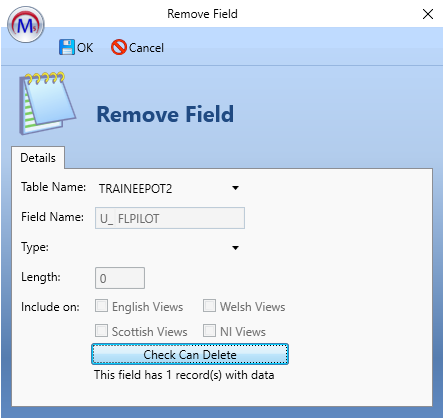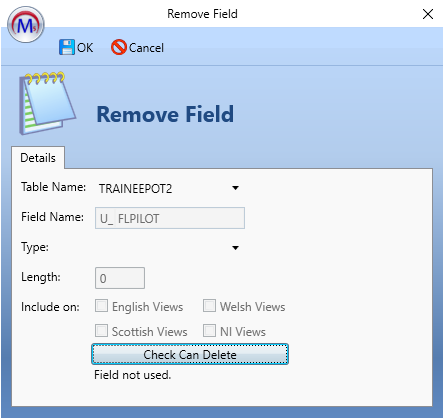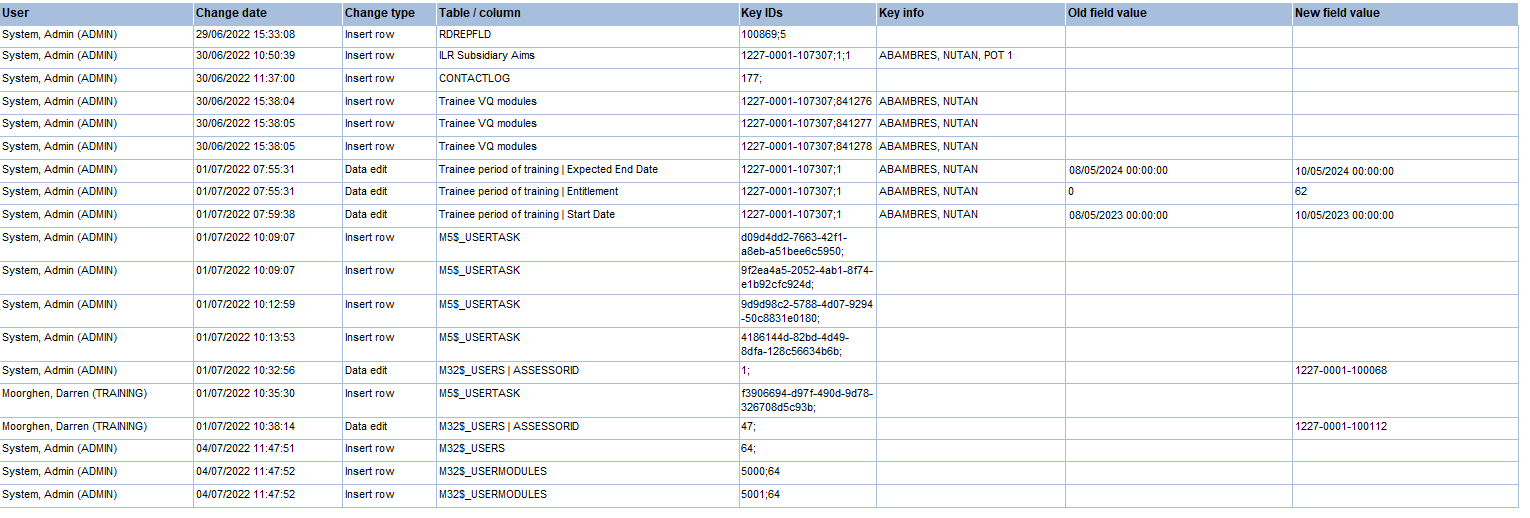5.26 Maytas LLWR Release Notes
Note regarding submissions
We would like to remind providers to create a submission early and check for any errors using reports from LLWR-Inform. Providers should also remember to download their ULI file. After submission to the DfE, providers should check that data has submitted correctly using the available reports. Providers should check that all their expected starts and completions are submitted correctly.
Our support desk gets extremely busy in the days prior to the submission deadlines, and although we try and prioritise submission-related queries, we cannot guarantee assistance if queries are sent late. If you do encounter any issues, please ensure that you contact Maytas Support as soon as possible, as we can only rectify issues of which we are aware. We also recommend checking Maytas Communities regularly for information on any known issues and solutions. Tribal cannot be held responsible for any issues caused by your failure to comply with this advice
Technical specification
The latest Maytas and Maytas Hub technical specification can be found here.
Once the upgrade has been completed, the version number should be checked to ensure it has been successful.
- Start Maytas and go to Support on the toolbar.
- Click About.
- The version numbers should read 5.26.8620.1. If you have any other version, please ensure you have followed the upgrade instructions correctly. If you require assistance, please contact Maytas Support.
It is the responsibility of customers to ensure that users carry out any required user acceptance testing and sign off on the upgrade.
Complete the Upgrade
Features Added in the Upgrade
These are the main updates in the upgrade:
- Standard Import updates
- Option to delete unused custom fields
- Reports Library 1.0.4.6
- Fixes to a number of issues
Maytas 5 Version 5.26.8620.1 Release Notes
Standard Import Updates
Files and user in log
The Standard Import database log now records the files that were used in an import and the user who performed the import. This can be found in the STDIMPORT_LOG table, with the details stored in the LOGDETAILS column. An example log would appear as follows:
Csv File = 'C:\Files\Example import data.xlsx' and Con File = 'C:\Files\Example import data.CON' by user = 1 : ADMIN
Sub folders for watchers
When entering the folder that a standard import watcher should check for files to import, sub folders can now be specified by using a backslash (e.g. Watchers\Folder1 and Watchers\Folder2).
Deletion of Unused Custom Fields
Custom fields, i.e. those which begin with U_ in the database, can now be removed via Maytas if every row for that field is null. This requires a permission to be set:
- Go to Tools | Edit Permissions.
- Select the user or group which requires permission.
- Go to the Commands tab.
- Expand the Lookup Editor section.
- Set the Delete Field permission to Visible.
- Click Apply and restart Maytas for the change to take effect.
To delete an unused custom field:
- Go to Tools | DB Schema.
- Expand the relevant table on the left and select the U_ field you wish to delete.
-
Click Remove Field on the ribbon.

- Click the Check Can Delete button. If there are any records with data in the field (i.e. where the field is not null), this will be indicated under the button and you will not be able to click the OK button to remove the field.
-
If you decide to remove any data from the field, click the Check Can Delete button again once the data has been removed. It will now indicate that the field is not used.

- Click OK to delete the field (or click Cancel to abort).
Reports Library 1.0.4.6
Upgrade the Reports Library
How to Upgrade the Reports Library
The Reports Library upgrade should be performed by an admin user, which will upgrade the reports for all users.
To enable to the Upgrade reports button for an admin user:
- Go to Tools | Edit Permissions.
- Select the user or group which requires permission.
- Go to the Commands tab.
- Expand the Support section.
- Set the Report SQL Upgrade permission to Visible.
- Click Apply and restart Maytas for the change to take effect.
For customers who manage their own systems on-premise, it is strongly advised to take a database backup before performing the upgrade. This is not necessary for hosted customers as backups are taken regularly.
To upgrade the Reports Library:
- Go to Support on the toolbar.
-
Click Upgrade reports.

- You will asked to confirm that you wish to perform the reports upgrade SQL. Click OK to continue.
- A message will appear saying that a task has been created. Click OK.
-
You can check that the upgrade was successful by going to Home on the toolbar and then selecting Server Tasks | View Jobs.

If the Status indicates that the upgrade has failed, please do not continue with importing the reports package and raise an incident on theSelf Support Portalfor assistance.
- Next, the reports package must be imported. Go to Home on the toolbar and click Import on the Reports panel on the ribbon.
- This will display the Report Import wizard. Click +Add Files.
- Browse to the Maytas 5\Extras\Reports Library folder of the upgrade, select one of the following packages and click Open:
- For all reports, select Reports Library 1.0.4.6 (all reports).
- For ESFA and general reports only, select Reports Library 1.0.4.6 (ESFA and general reports).m5rep.
- Click Finish to import the reports. This process may take a long time (potentially upwards of 30 minutes) depending on the size of the reports package.
-
When the reports have finished importing, click Finish.
The import log may display various warning messages, which are generally a result of report formatting and other factors which do not impact how a report runs (e.g. The text box ‘textbox3’ extends beyond the bottom edge of its container.). Unless a message indicates that the import has failed, these warnings can safely be ignored.
New Report - Data Changes
The Data Changes report shows a list of changes by users in a date and time range from both Maytas 5 and Maytas Hub. This is based on data in the M32$_WEB_USERCHANGES table, though not everything from that table is shown (e.g. internal changes such as funding cache updates are not shown). The results in the report are data changes performed by users, such as creating or deleting a learner record, directly editing a field or importing data via the Standard Import system.
The Data Changes report can be found in the Audit folder of the Reports Library.
The Data Changes report shows a wide range of user-specific data. As such, it is strongly recommended to review and limit access to the report as required.

Parameters
-
From / To date - The date range to show in the report. Both dates default to the previous day.
-
From / To hour / minute - These allow you to narrow the date range by time. The defaults are from 00:00 to 23:59 (i.e. the full day).
-
User type - Whether to show Maytas 5 users, Maytas Hub users or both.
-
Include disabled accounts - Whether to show results for user accounts that have been disabled.
-
Users - Allows you to filter by specific users.
-
User actions to show - Allows you to specify which of the three user actions (data edit, insert row and delete row) to show.
-
Learners - Allows you to filter by specific learners.
-
Tables - Allows you to filter by changes to specific tables.
-
Show descriptive table / column names where available - Toggles whether to show table names as stored in the database or their descriptive names where available (e.g. TRAINEE vs Trainee Basic Details).
-
Ready to run - Set this to Yes when all other parameters have been set as required.
Results columns
-
User - The user who performed the change.
-
Change date - The date and time of the change.
-
Change type - Whether the data change was newly created (insert row), removed (delete row) or an alteration (data edit).
-
Table / column - The table and column relating to the change. The column is only displayed for data edits, as insert and delete changes refer to an entire row being added or removed from a table, not a change to a specific column.
-
Key IDs - These display the key identifiers for the relevant table, which can be used to perform further investigation outside of the report if required.
-
Key info - Where applicable, learner, assessor and employer names are displayed here.
-
Old / New field value - For data edits, these show what the data has changed from and to. Note that the report results do not distinguish between null and blank values.